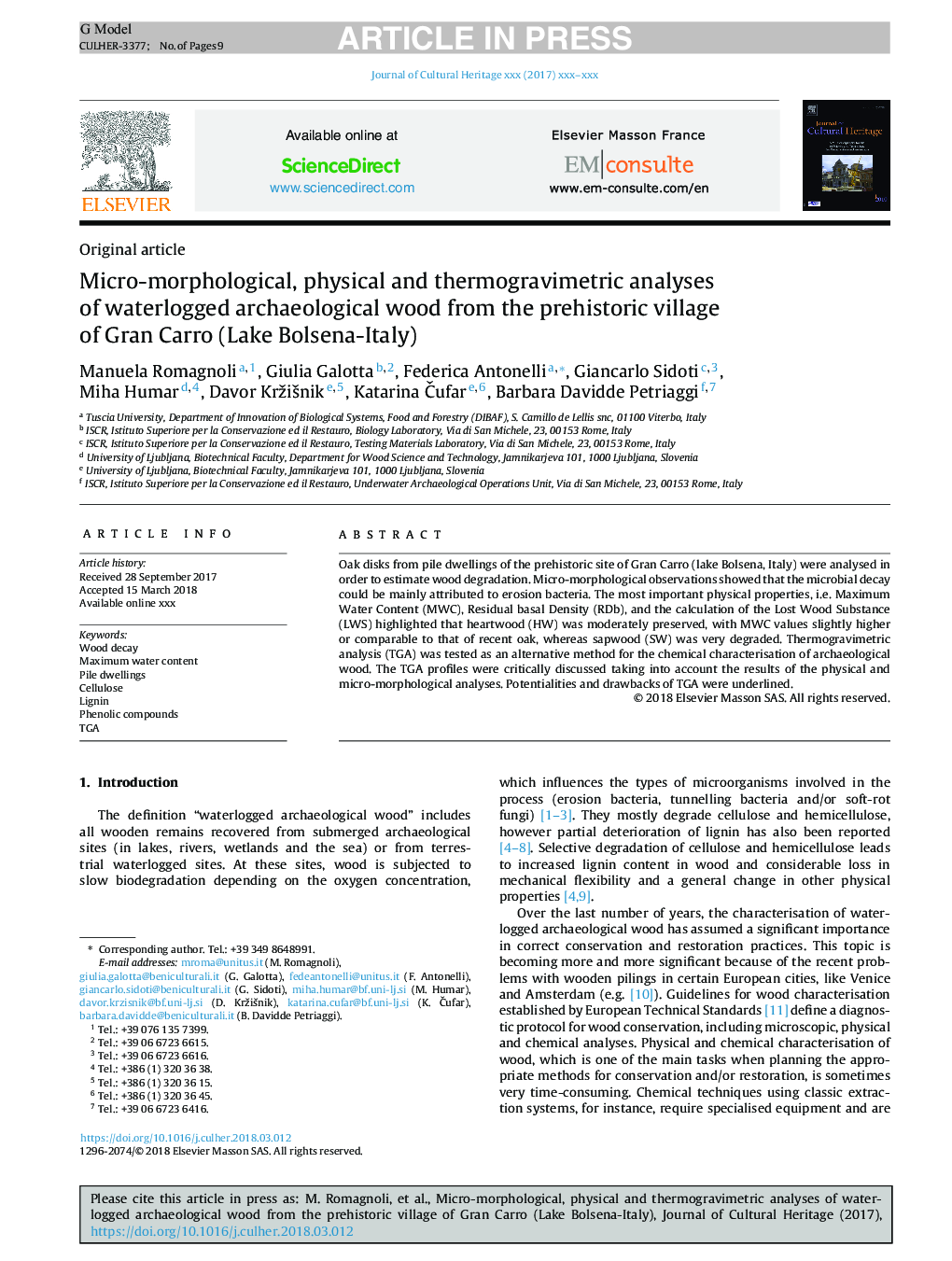| Article ID | Journal | Published Year | Pages | File Type |
|---|---|---|---|---|
| 8965272 | Journal of Cultural Heritage | 2018 | 9 Pages |
Abstract
Oak disks from pile dwellings of the prehistoric site of Gran Carro (lake Bolsena, Italy) were analysed in order to estimate wood degradation. Micro-morphological observations showed that the microbial decay could be mainly attributed to erosion bacteria. The most important physical properties, i.e. Maximum Water Content (MWC), Residual basal Density (RDb), and the calculation of the Lost Wood Substance (LWS) highlighted that heartwood (HW) was moderately preserved, with MWC values slightly higher or comparable to that of recent oak, whereas sapwood (SW) was very degraded. Thermogravimetric analysis (TGA) was tested as an alternative method for the chemical characterisation of archaeological wood. The TGA profiles were critically discussed taking into account the results of the physical and micro-morphological analyses. Potentialities and drawbacks of TGA were underlined.
Related Topics
Physical Sciences and Engineering
Chemistry
Physical and Theoretical Chemistry
Authors
Manuela Romagnoli, Giulia Galotta, Federica Antonelli, Giancarlo Sidoti, Miha Humar, Davor KržiÅ¡nik, Katarina Äufar, Barbara Davidde Petriaggi,
